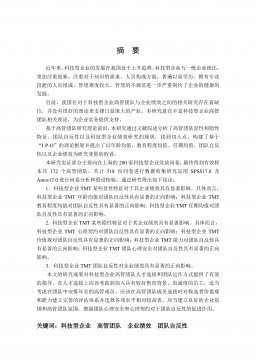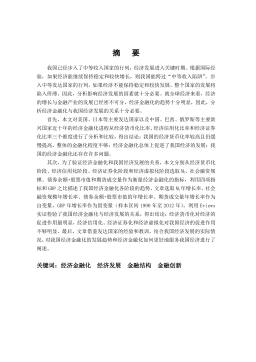向心叶轮气动设计及优化
VIP免费
摘 要
向心叶轮在小流量、高转速条件下可以实现大功率及高效率, 而且结构紧凑、质
量轻、制造成本低,在车辆、船舶、航空等领域中得到广泛应用。由于向心叶轮流道
半径小,叶型转折大,气流的三维流动特性及粘性作用更加显著,流道内气体更容易
产生局部分离及涡流现象,气动设计中需要进一步挖掘潜力,提高性能。现阶段进行
相关气动优化设计研究是向心叶轮的研究重点。
本文针对向心叶轮的气动优化设计开展了以下工作:
(1)根据总体性能要求,进行一维气动热力设计,分析并选取设计参数,计算设
计出了初步的涡轮子午流道形状及叶轮速度参数三角形,为向心叶轮的三维气动优化
设计提供合理的初始设计。
(2)应用 CFD 软件模拟初始向心叶轮内流动,计算叶轮流动性能,考核设计指
标。综合分析初始叶轮性能参数及内部流场,确定叶轮型线优化改进的参数范围。
(3)应用 Bezier 函数对叶轮型线参数化,通过调整叶轮局部型线,控制叶轮流道
形状,以效率为优化目标,结合均匀试验设计完成对优化叶轮筛选。优化后涡轮效率
提高了 1%,叶轮性能也得到改善。
(4)研究了叶轮轴向长度、轮缘比对气动性能的影响,发现选取较小轮缘比时,
叶轮内气体流动损失明显减低。鉴于是对轴向长度和轮缘比两个因素的综合优化,轴
向长度对叶轮气动性能的影响尚不明显。
本文针对向心叶轮的优化,其结果说明了基于参数优选的优化设计方法是可行的,
为向心叶轮气动性能的优化设计提供了参考。
关键词:向心叶轮 气动设计 均匀设计 优化
ABSTRACT
Radial inflow turbine achieves high power and high efficiency at low flow rates
and high speeds。It is widely used in vehicles,ships and aviation for its compact
structure, light weight and low cost. However, due to its small channel radius and
large blade airfoil twist, three-dimensional flow is much obvious and the effect of the
viscous force is much significant. The separated vortex is induced inside the flow
channel .Compared with the axial flow turbine, the radial inflow turbine efficiency is
still lower .During its aerodynamic design, further potential has to be explored to
improve its performance. The key research for the radial inflow turbine is to focus on
the aerodynamic optimization design.
In this paper , aerodynamic optimization design is mainly carried out for radial
inflow turbine impeller as follows:
(1)According to the performance requirements, one-dimensional meanline flow
design was done to select the design parameters, to form the primary meridional
channel geometry and the velocity triangle of the impeller, to provide a reasonable
preliminary design of radial inflow turbine for three-dimensional aerodynamic
optimization design.
(2)CFD technique is applied to simulate the impeller flow and to get the flow
properties, with assessing the design target .The possible range of the optimal
parameters of the impeller profile is determined through comprehensive analysis of
the performance and internal flow field of the impeller.
(3) Bezier polynomial curve is used to parameterize radial turbine impeller. The
shape of the impeller flow channel is controlled by varying the control point locations
of the local impeller lines. Efficiency is chosen as the objective function. Uniform
design optimization method is used to obtain optimal blades. At design conditions,
calculation results show that the efficiency of the optimized impeller researched 1
percent higher over its original one, with the general performance being improved.
(4)The impacts of the axial length and the shroud ratio on the impeller
aerodynamic performance is also researched. When choosing smaller shroud-ratio ,the
flow loss is significantly reduced. Because the two factors are taken into consideration
in the comprehensive optimization, the effect of the axial length on the aerodynamic
performance is not yet clear.
The result shows that the optimization design method adopted in this paper is
feasible. It can provide essential reference for the aerodynamic optimization design of
radial inflow turbine.
Key word: radial turbine impeller, aerodynamic design ,uniform
design,optimization
目 录
摘 要
ABSTRACT
第一章 绪论 .................................................................................................................... 1
1.1 研究背景及意义 ................................................................................................. 1
1.2 向心叶轮的气动设计进展 .................................................................................. 3
1.3 向心叶轮气动优化设计进展 ............................................................................. 4
1.4 向心叶轮内部流动研究进展 ............................................................................. 5
1.5 本文主要工作 ..................................................................................................... 7
第二章 向心叶轮气动设计及几何设计 ...................................................................... 8
2.1 向心叶轮工作过程及工作原理 .......................................................................... 8
2.2 向心叶轮一维热力计算 ................................................................................... 10
2.2.1 计算流程 ................................................................................................. 10
2.2.2 一维设计参数选取 ................................................................................. 11
2.2.3 一维设计过程 ......................................................................................... 13
2.3 叶轮性能预测 ................................................................................................... 14
2.3.1 攻角损失 ................................................................................................. 14
2.3.2 流道损失 ................................................................................................. 15
2.3.3 出口动能损失 ......................................................................................... 16
2.3.4 叶顶间隙损失 ......................................................................................... 16
2.4 可行性检验及设计结果分析 ........................................................................... 16
2.4.1 可行性检验 ............................................................................................. 16
2.4.2 设计结果分析 ......................................................................................... 17
2.5 叶轮叶片数目的选取分析 ............................................................................... 18
2.6 叶轮几何型线设计 ........................................................................................... 19
2.6.1 子午面型线设计 ...................................................................................... 19
2.6.2 叶型线设计 ........................................................................................... 20
2.7 小结 ................................................................................................................... 20
第三章 向心叶轮内部流动的数值分析 .................................................................... 22
3.1 流体控制方程 ................................................................................................... 22
3.1.1 守恒型 N-S 方程 ..................................................................................... 22
3.1.2 Favre 平均 N-S 方程 ............................................................................... 22
3.1.3 湍流模型 ................................................................................................. 23
3.2 数值模拟方法 ................................................................................................... 24
3.2.1 多重网格法 ............................................................................................. 24
3.2.2 当地时间步长 ......................................................................................... 25
3.2.3 隐式残差平均 ......................................................................................... 26
3.3 边界条件设定及收敛性判定 ........................................................................... 27
3.3.1 边界条件 ................................................................................................. 27
3.3.2 计算结果收敛性判定 ............................................................................. 27
3.4 初始叶轮网格模型及网格无关性验证 ........................................................... 28
3.4.1 初始叶轮网格模型 .................................................................................. 28
3.4.2 网格无关性验证 ..................................................................................... 29
3.5 初始叶轮性能参数评价及流场分析 ............................................................... 30
3.5.1 性能参数评价 .......................................................................................... 30
3.5.2 叶轮内流动特性分析 .............................................................................. 31
3.5.3 叶轮通道二次流及涡系分析 ................................................................. 32
3.6 小结 ................................................................................................................... 34
第四章 向心叶轮优化设计 .......................................................................................... 36
4.1 叶轮型线参数化 ............................................................................................... 36
4.2 优化方法(均匀实验) ................................................................................... 38
4.3 叶型优化设计 ................................................................................................... 40
4.3.1 目标函数 .................................................................................................. 40
4.3.2 优化流程及优选结果 ............................................................................. 40
4.4 叶轮型线优化结果及分析 ............................................................................... 41
4.4.1 叶片表面载荷分布 .................................................................................. 42
4.4.2 叶轮出口参数分析 ................................................................................. 43
4.4.3 叶轮内流动损失分析 ............................................................................. 45
4.4.4 叶轮通道内涡系流动及损失分析 ......................................................... 48
4.5 叶轮轴向长度、轮缘比对气动性能的影响 .................................................... 50
4.5.1 均匀设计试验 ......................................................................................... 50
4.5.2 优化结果分析 .......................................................................................... 51
4.6 小结 ................................................................................................................... 55
第五章 结论与展望 ...................................................................................................... 57
5.1 结论 ................................................................................................................... 57
5.2 展望 .................................................................................................................... 57
参考文献 ........................................................................................................................ 59
在读期间公开发表论文和承担科研项目及取得成果 ................................................ 63
第一章绪论
1
第一章 绪论
1.1 研究背景及意义
1813 年,世界上最早的向心水力涡轮问世,它自身所具备的简单结构和高性
能使之投入工程应用。在 20 世纪初期,由 Buchi 提出的废气涡轮增压设想为向心
涡轮提供了广大的市场空间,其后它被用于各种小中型柴油机和车辆发动机的涡
轮增压器中。典型的车用涡轮增压器如图 1-1 所示,在废气涡轮增压器中,发动
机排出的高温废气驱动涡轮转动,废气所携带的能量转化成机械能,带动离心压
气机旋转;更多的空气被吸入压气机经压缩供给发动机,进而达到提升发动机功
率及经济性的目的。
图1-1 涡轮增压器工作基本原理图
1939 年,德国学者 Hansvon Ohain 采用的也是向心涡轮,设计第一台喷气发
动机。近年来,伴随着新型材料、微加工等领域的扩大,各种航空飞行器生产微
型化趋势加剧,以求满足高能量存储、大功率重量比的要求。随着实际需求的推
动,向心叶轮在航空领域被用于微型涡轮发动机[1]、火箭用涡轮泵[2]、发动机的
辅助动力装置[3]等设备中。比如南京航空航天大学研发的微型发动机直径为 60mm,
其采用的大小叶片式向心叶轮直径也仅为 38mm[4](如图 1-2),美国斯坦福大学
研制的氮化硅径向涡轮,涡轮直径为 12mm,设计目标转速达到了 1000krpm[5](如
图1-3)。
向心叶轮气动设计及优化
2
图1-2 MTE-A 微型发动机剖面图
图1-3 斯坦福大学微型涡轮发动机示意
在制冷装置、天然气液化装置和空气调节装置[6]上,同样有向心涡轮的踪影。
作为透平膨胀机内的主要部件,向心涡轮可以实现气体的膨胀做功,使得气体本
身的焓值减少,温度减低,进而获得冷量。图 1-4 示意了典型制冷膨胀机结构。
图1-4 制冷膨胀机典型结构
1—透平膨胀机;2—止推轴承油膜压力计;3—止推轴承;4—推力平衡盘;5—
压缩机;6—平衡盘压力计;7—节流阀
摘要:
展开>>
收起<<
摘要向心叶轮在小流量、高转速条件下可以实现大功率及高效率,而且结构紧凑、质量轻、制造成本低,在车辆、船舶、航空等领域中得到广泛应用。由于向心叶轮流道半径小,叶型转折大,气流的三维流动特性及粘性作用更加显著,流道内气体更容易产生局部分离及涡流现象,气动设计中需要进一步挖掘潜力,提高性能。现阶段进行相关气动优化设计研究是向心叶轮的研究重点。本文针对向心叶轮的气动优化设计开展了以下工作:(1)根据总体性能要求,进行一维气动热力设计,分析并选取设计参数,计算设计出了初步的涡轮子午流道形状及叶轮速度参数三角形,为向心叶轮的三维气动优化设计提供合理的初始设计。(2)应用CFD软件模拟初始向心叶轮内流动,计...
相关推荐
-
跨境电商商业计划书模版VIP免费
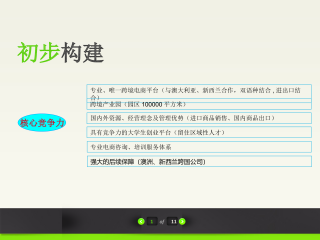
 2025-01-09 27
2025-01-09 27 -
跨境电商方案范文VIP免费
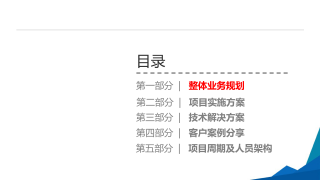
 2025-01-09 14
2025-01-09 14 -
创业计划书VIP免费
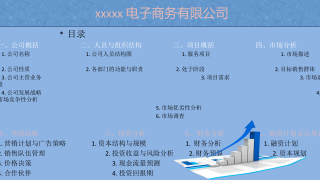
 2025-01-09 18
2025-01-09 18 -
xx生鲜APP计划书VIP免费

 2025-01-09 12
2025-01-09 12 -
跨境电商创业园商业计划书(盈利模式)VIP免费
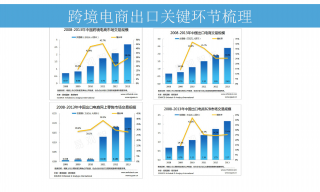
 2025-01-09 8
2025-01-09 8 -
跨境电商计划书VIP免费
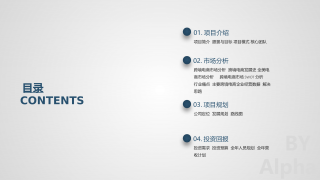
 2025-01-09 13
2025-01-09 13 -
绿色食品电商平台项目计划书VIP免费

 2025-01-09 22
2025-01-09 22 -
农产品电子商务商业计划书VIP免费

 2025-01-09 9
2025-01-09 9 -
农村电商平台商业计划书VIP免费
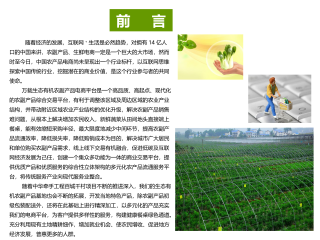
 2025-01-09 13
2025-01-09 13 -
生鲜商城平台商业计划书VIP免费
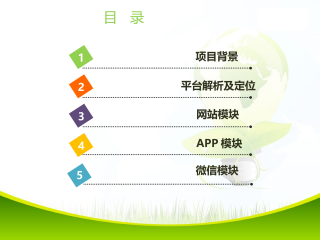
 2025-01-09 21
2025-01-09 21
作者:赵德峰
分类:高等教育资料
价格:15积分
属性:67 页
大小:2.97MB
格式:PDF
时间:2024-11-11


